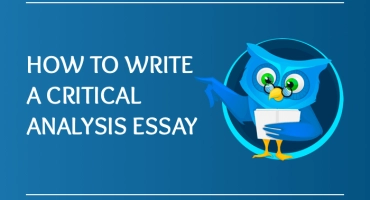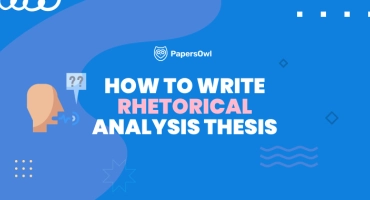How to Write an Article Critique
Table of contents
- 1 What is an Article Critique Writing?
- 2 How to Critique an Article: The Main Steps
- 3 Article Critique Outline
- 4 Article Critique Formatting
- 5 How to Write a Journal Article Critique
- 6 How to Write a Research Article Critique
- 7 Research Methods in Article Critique Writing
- 8 Tips for writing an Article Critique
Do you know how to critique an article? If not, don’t worry – this guide will walk you through the writing process step-by-step. First, we’ll discuss what a research article critique is and its importance. Then, we’ll outline the key points to consider when critiquing a scientific article. Finally, we’ll provide a step-by-step guide on how to write an article critique including introduction, body and summary. Read more to get the main idea of crafting a critique paper.
What is an Article Critique Writing?
An article critique is a formal analysis and evaluation of a piece of writing. It is often written in response to a particular text but can also be a response to a book, a movie, or any other form of writing. There are many different types of review articles. Before writing an article critique, you should have an idea about each of them.
To start writing a good critique, you must first read the article thoroughly and examine and make sure you understand the article’s purpose. Then, you should outline the article’s key points and discuss how well they are presented. Next, you should offer your comments and opinions on the article, discussing whether you agree or disagree with the author’s points and subject. Finally, concluding your critique with a brief summary of your thoughts on the article would be best. Ensure that the general audience understands your perspective on the piece.
How to Critique an Article: The Main Steps
If you are wondering “what is included in an article critique,” the answer is:
An article critique typically includes the following:
- A brief summary of the article.
- A critical evaluation of the article’s strengths and weaknesses.
- A conclusion.
When critiquing an article, it is essential to critically read the piece and consider the author’s purpose and research strategies that the author chose. Next, provide a brief summary of the text, highlighting the author’s main points and ideas. Critique an article using formal language and relevant literature in the body paragraphs. Finally, describe the thesis statement, main idea, and author’s interpretations in your language using specific examples from the article. It is also vital to discuss the statistical methods used and whether they are appropriate for the research question. Make notes of the points you think need to be discussed, and also do a literature review from where the author ground their research. Offer your perspective on the article and whether it is well-written. Finally, provide background information on the topic if necessary.
When you are reading an article, it is vital to take notes and critique the text to understand it fully and to be able to use the information in it. Here are the main steps for critiquing an article:
- Read the piece thoroughly, taking notes as you go. Ensure you understand the main points and the author’s argument.
- Take a look at the author’s perspective. Is it powerful? Does it back up the author’s point of view?
- Carefully examine the article’s tone. Is it biased? Are you being persuaded by the author in any way?
- Look at the structure. Is it well organized? Does it make sense?
- Consider the writing style. Is it clear? Is it well-written?
- Evaluate the sources the author uses. Are they credible?
- Think about your own opinion. With what do you concur or disagree? Why?

Article Critique Outline
When assigned an article critique, your instructor asks you to read and analyze it and provide feedback. A specific format is typically followed when writing an article critique.
An article critique usually has three sections: an introduction, a body, and a conclusion.
- The introduction of your article critique should have a summary and key points.
- The critique’s main body should thoroughly evaluate the piece, highlighting its strengths and weaknesses, and state your ideas and opinions with supporting evidence.
- The conclusion should restate your research and describe your opinion.
You should provide your analysis rather than simply agreeing or disagreeing with the author. When writing an article review, it is essential to be objective and critical. Describe your perspective on the subject and create an article review summary. Be sure to use proper grammar, spelling, and punctuation, write it in the third person, and cite your sources.
Article Critique Formatting
When writing an article critique, you should follow a few formatting guidelines. The importance of using a proper format is to make your review clear and easy to read.
-
Make sure to use double spacing throughout your critique. It will make it easy to understand and read for your instructor.
-
Indent each new paragraph. It will help to separate your critique into different sections visually.
-
Use headings to organize your critique. Your introduction, body, and conclusion should stand out. It will make it easy for your instructor to follow your thoughts.
-
Use standard fonts, such as Times New Roman or Arial. It will make your critique easy to read.
-
Use 12-point font size. It will ensure that your critique is easy to read.

How to Write a Journal Article Critique
When critiquing a journal article, there are a few key points to keep in mind:
- Good critiques should be objective, meaning that the author’s ideas and arguments should be evaluated without personal bias.
- Critiques should be critical, meaning that all aspects of the article should be examined, including the author’s introduction, main ideas, and discussion.
- Critiques should be informative, providing the reader with a clear understanding of the article’s strengths and weaknesses.
When critiquing a research article, evaluating the author’s argument and the evidence they present is important. The author should state their thesis or the main point in the introductory paragraph. You should explain the article’s main ideas and evaluate the evidence critically. In the discussion section, the author should explain the implications of their findings and suggest future research.
It is also essential to keep a critical eye when reading scientific articles. In order to be credible, the scientific article must be based on evidence and previous literature. The author’s argument should be well-supported by data and logical reasoning.
How to Write a Research Article Critique
When you are assigned a research article, the first thing you need to do is read the piece carefully. Make sure you understand the subject matter and the author’s chosen approach. Next, you need to assess the importance of the author’s work. What are the key findings, and how do they contribute to the field of research?
Finally, you need to provide a critical point-by-point analysis of the article. This should include discussing the research questions, the main findings, and the overall impression of the scientific piece. In conclusion, you should state whether the text is good or bad. Read more to get an idea about curating a research article critique. But if you are not confident, you can ask “write my papers” and hire a professional to craft a critique paper for you. Explore your options online and get high-quality work quickly.
However, test yourself and use the following tips to write a research article critique that is clear, concise, and properly formatted.
- Take notes while you read the text in its entirety. Right down each point you agree and disagree with.
- Write a thesis statement that concisely and clearly outlines the main points.
- Write a paragraph that introduces the article and provides context for the critique.
- Write a paragraph for each of the following points, summarizing the main points and providing your own analysis:
- The purpose of the study
- The research question or questions
- The methods used
- The outcomes
- The conclusions were drawn by the author(s)
- Mention the strengths and weaknesses of the piece in a separate paragraph.
- Write a conclusion that summarizes your thoughts about the article.
- Free unlimited checks
- All common file formats
- Accurate results
- Intuitive interface

Research Methods in Article Critique Writing
When writing an article critique, it is important to use research methods to support your arguments. There are a variety of research methods that you can use, and each has its strengths and weaknesses. In this text, we will discuss four of the most common research methods used in article critique writing: quantitative research, qualitative research, systematic reviews, and meta-analysis.
Quantitative research is a research method that uses numbers and statistics to analyze data. This type of research is used to test hypotheses or measure a treatment’s effects. Quantitative research is normally considered more reliable than qualitative research because it considers a large amount of information. But, it might be difficult to find enough data to complete it properly.
Qualitative research is a research method that uses words and interviews to analyze data. This type of research is used to understand people’s thoughts and feelings. Qualitative research is usually more reliable than quantitative research because it is less likely to be biased. Though it is more expensive and tedious.
Systematic reviews are a type of research that uses a set of rules to search for and analyze studies on a particular topic. Some think that systematic reviews are more reliable than other research methods because they use a rigorous process to find and analyze studies. However, they can be pricy and long to carry out.
Meta-analysis is a type of research that combines several studies’ results to understand a treatment’s overall effect better. Meta-analysis is generally considered one of the most reliable type of research because it uses data from several approved studies. Conversely, it involves a long and costly process.
Are you still struggling to understand the critique of an article concept? You can contact an online review writing service to get help from skilled writers. You can get custom, and unique article reviews easily.

Tips for writing an Article Critique
It’s crucial to keep in mind that you’re not just sharing your opinion of the content when you write an article critique. Instead, you are providing a critical analysis, looking at its strengths and weaknesses. In order to write a compelling critique, you should follow these tips:
Take note carefully of the essential elements as you read it.
- Make sure that you understand the thesis statement.
- Write down your thoughts, including strengths and weaknesses.
- Use evidence from to support your points.
- Create a clear and concise critique, making sure to avoid giving your opinion.
It is important to be clear and concise when creating an article critique. You should avoid giving your opinion and instead focus on providing a critical analysis. You should also use evidence from the article to support your points.







